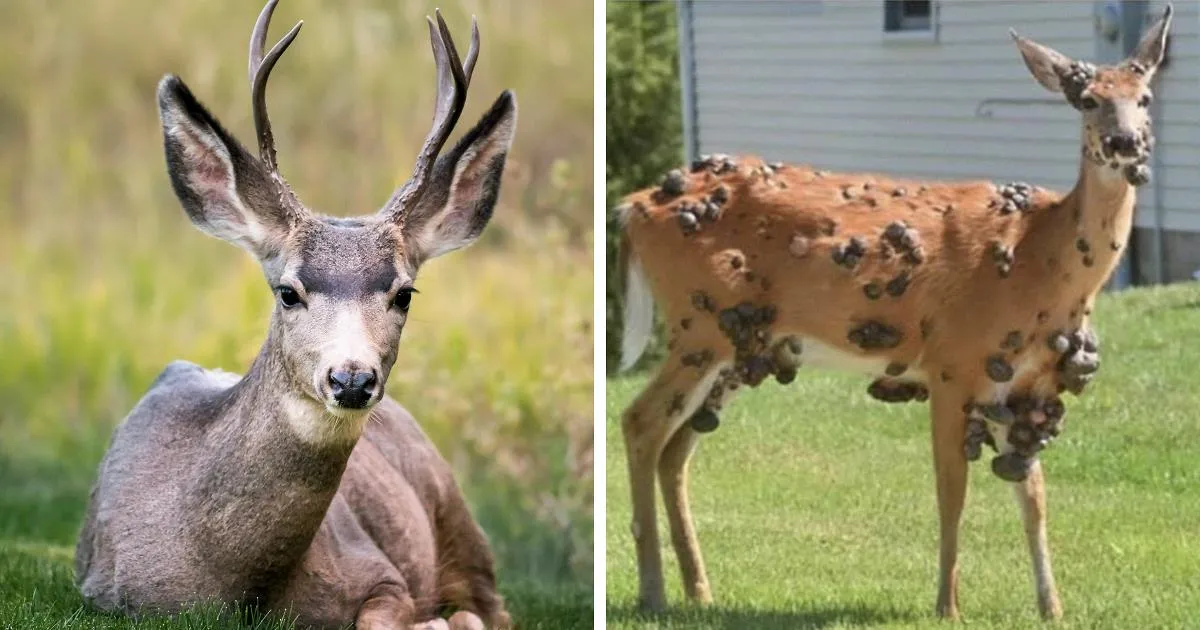
The Florida Fish and Wildlife Conservation Commission (FWC) has confirmed its second case of Chronic Wasting Disease (CWD), a severe neurodegenerative illness with a 100% fatality rate among deer. The initial case of CWD for 2025 was identified in neighboring Georgia, marking a significant concern for wildlife health across the southeastern United States. The University of Minnesota has classified this illness as a "fatal prion disease," making it the 36th state in the US to report such occurrences.
The latest case was discovered in Holmes County, Florida, close to the Georgia border, where the first Georgia case was also reported. The FWC disclosed that the affected deer was a 1.5-year-old doe, which was sampled after being involved in a road accident less than a mile south of Florida’s initial 2023 detection. This previous case involved a white-tailed deer struck by a vehicle on a highway, leading to the implementation of a comprehensive disease response plan.
The FWC is taking this recent diagnosis seriously and has reiterated its commitment to containing the spread of CWD within the area where it was found. The agency stated, “The FWC and its agency partners take CWD very seriously and are continuing with their comprehensive response plan.” Notably, since the first detection, no changes have been made to the Management or Enhanced Surveillance Zones due to the proximity of the cases.
Efforts to monitor the spread of CWD in Florida have seen over 2,406 deer tested, with only two confirmed cases of the disease. The FWC reports that 90 evaluations are still pending, reflecting their proactive approach to managing wildlife health and public safety. Experts caution against consuming meat from affected animals, as there are concerns it may lead to illnesses similar to mad cow disease.
The University of Minnesota describes CWD as a "fatal neurodegenerative disease" caused by infectious misfolded proteins, commonly known as prions. While CWD does not directly affect humans, it poses a considerable risk to other members of the Cervidae family, such as elk and moose, primarily through environmental contamination. Symptoms in infected animals include significant weight loss, and while there may not be visible signs in early stages, the late stages are marked by severe bodily dysfunctions.
It is crucial to differentiate CWD from other conditions affecting deer, such as cutaneous fibromas. These wart-like growths are relatively harmless and can appear on deer, rabbits, and squirrels. The term "zombie deer" is often incorrectly associated with CWD, but it more accurately describes cervids displaying cutaneous fibromas. Unlike CWD, cutaneous fibromas do not lead to death unless they interfere with an animal's ability to eat or evade predators.
The outbreak of CWD has not gone unnoticed on social media, with users expressing their thoughts and concerns. Comments range from humorous musings about the safety of consuming deer meat compared to grocery store options to inquiries about the origins of the disease. One user remarked that eating a "zombie deer" is "100% safer" than most store-bought food, highlighting the ongoing public discourse around wildlife health and safety.
On a national level, the federal government has also recognized the threat posed by CWD. In December 2022, Congress passed the Chronic Wasting Disease Research and Management Act, allocating $35 million annually for research focused on disease detection in live animals and understanding its transmission. This initiative emphasizes the critical need for ongoing research to combat this fatal disease and protect wildlife populations.
As Florida continues to navigate the challenges posed by Chronic Wasting Disease, it remains imperative for local residents and wildlife enthusiasts to stay informed and adhere to guidelines issued by the FWC. The health of both wildlife and human communities depends on a collective effort to monitor and manage this serious threat.